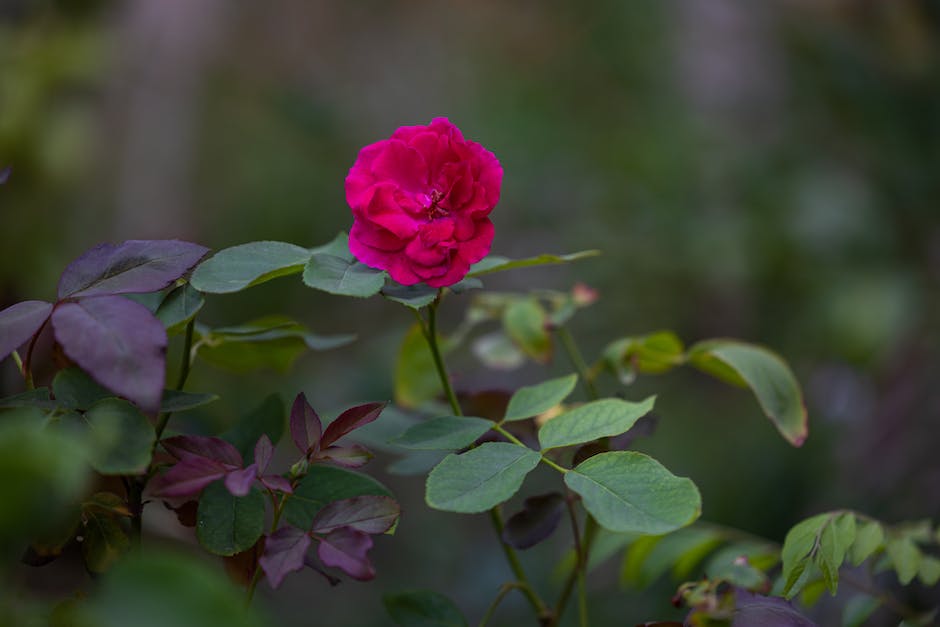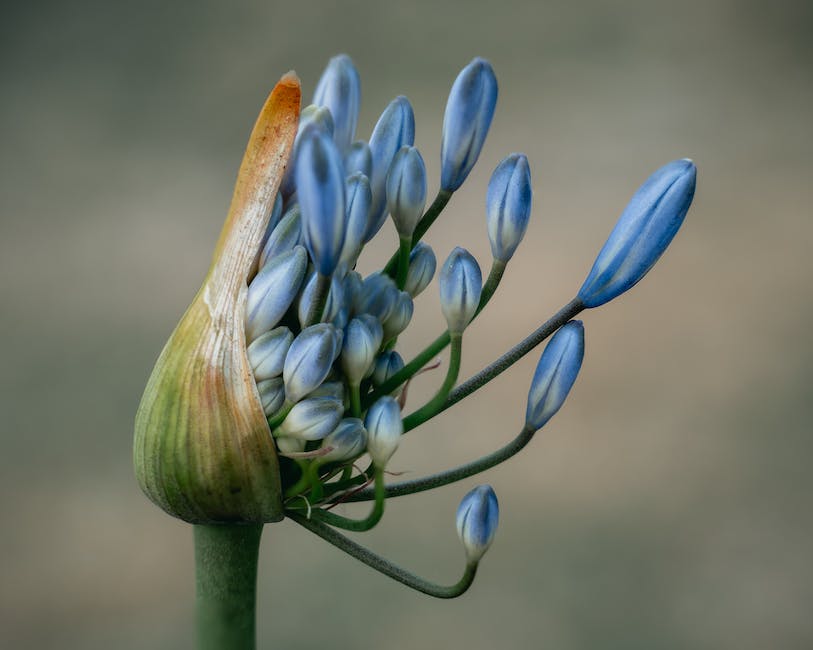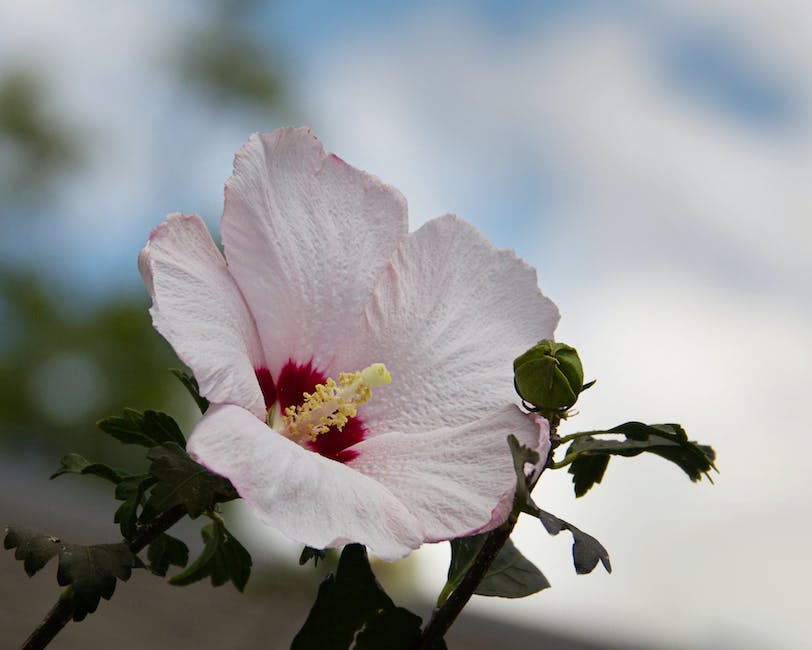Pruning Rose of Sharon: Steps for Healthy Growth

When it comes to maintaining the vibrancy and health of a Rose of Sharon, knowing the ins and outs of pruning is key. While these beautiful flowering shrubs can grace any garden with their elegance, understanding the nuances of their care can ensure their longevity and aesthetic appeal. This guide will journey through the vital aspects of pruning a Rose of Sharon, from discerning the right time for pruning to mastering the appropriate techniques, and also delving into the post-pruning care. Understanding the plant’s seasonal growth and blooming patterns, along with an adequate knowledge of the correct tools and methods, not only enhances its health but also your gardening skills.
Understanding the Right Time for Pruning
“Mastering the Art of Pruning Your Beloved Rose of Sharon: Timing is Everything”
A profound understanding of the timing and process involved in pruning is fundamental to maintaining a vibrant and lush Rose of Sharon. Affectionately named the “hardy hibiscus” for its resilient persona, and coveted for its bountiful blossoms that offer an annual spectacle of mesmerizing colors, the Rose of Sharon is indeed a darling of the garden!
When it comes to pruning this audacious shrub, timing is indeed everything. The Rose of Sharon blooms from buds formed on new growth each season. As such, we don’t risk cutting off the coming season’s blossoms if we give it a right winter shave!
The optimal time to prune the Rose of Sharon is late winter or early spring, just before the new growth begins. This period typically ranges from late February to early April, varying slightly based on your particular location’s climatic nuances. Pruning during this window will encourage bushier growth, enhanced flowering, and a healthier overall plant.
Pruning on the cusp of spring’s arrival does more than just provide control over the plant’s size and shape. This timely trimming can invigorate older, less productive branches, spurring them to spring back into action, extravagantly decorated with fresh blooms. Essentially, pruning during this dormant phase sets the stage for a legendary performance by the Rose of Sharon in the forthcoming growing season.
Remember not to prune too early in winter. Doing so might risk unnecessary exposure of the plant to harsh winter elements, leading to extensive damage.
In conclusion, your beloved Rose of Sharon deserves the best care – and pruning at the right time is a significant part of that. Embrace the late winter or early spring pruning time, look forward to a mesmerizing summer and fall full of bountiful blooms, and take pride in your thriving garden landscape. Oh, and don’t forget to share these tips with fellow green-thumbed enthusiasts – after all, the joy of gardening is best when shared.

Pruning Techniques
Perfecting Your Pruning: Notebook Techniques for the Resplendent Rose of Sharon
Cherished by garden lovers as a gem in any horticultural ensemble, the Rose of Sharon owns a stunning flair potent enough to enthrall even the most discerning of eyes. These magnificent beauties, with their ability to sprout striking blooms amidst the sweltering summer heat, form an integral part of any well-appointed garden. However, a vital aspect of harnessing their full splendor lies in mastering the art of pruning.
As already discussed, pruning during late winter or early spring fosters lush growth and opulent flowering. But knowing the right time is merely the first step. To delve deeper into the art of pruning the Rose of Sharon, let’s unfurl the ins and outs of trimming techniques, the selection of appropriate tools, and precautions to heed during the process.
The first point to cultivate in mind is to prioritize the removal of dead wood and dried blossoms. Not only do these rob the plant of its aesthetic charm, but their ongoing presence may also hinder the growth of newer buds.
Use tools that are sharp enough for the task at hand. The selection of optimal pruning gear is pivotal to promoting the health of the Rose of Sharon. Scissors and hand pruners prove ideal for smaller branches, while loppers may be summoned for branches greater than half-an-inch in diameter.
Next comes the strategic aspect of pruning. Aim for a vase shape, which provides ample sunlight exposure for the entire plant, thereby promoting healthier blooming and growth. Always make your cuts at a 45-degree angle, ensuring the inclined side is facing outward. This helps keep water from settling on the cut, an important small detail that dramatically reduces the risk of disease and infection.
While enthusiastic in executing this pruning pursuit, it’s crucial to avoid overly thinning the Rose of Sharon. Over-pruning could be detrimental, setting back the growth and flowering of the plant. A rule of thumb here is not to remove more than one-third of the plant during a single pruning session.
Sometimes, you may stumble upon branches that are significantly bigger or longer than the others. In such cases, it’s advisable to trim these wayward limbs, irrespective of the one-third rule, so as to maintain an appealing shape and uniform appearance.
Lasty, no successful pruning session is complete without proper cleanup. Collect and dispose of all debris responsibly. By doing so, you prevent the possibility of disease and unwanted pests from targeting your treasured Rose of Sharon.
These practical instructions might appear to be minute details, but each plays a pivotal part in maximizing the flowering prowess of the Rose of Sharon. When approached with attentiveness, patience, and due diligence, pruning promises to transform your Rose of Sharon into a radiating centerpiece, ready to steal the show in your garden landscape. So, fellow gardeners, get your pruning shears ready and let the beauty of the Rose of Sharon flourish under your nurtured care. Happy gardening!

Care after Pruning
The post-pruning care for Rose of Sharon involves several fundamental steps that ensure your beautifully pruned shrub can recover, rejuvenate, and retain its glory. Armed with awareness and careful actions, you can keep your Rose of Sharon healthy and vibrant.
Immediately after pruning your Rose of Sharon, attention must be paid to potential infection points. Pruning exposes the plant’s internal tissues, creating an entryway for diseases and pests. To shield the Rose of Sharon from such calamities, consider applying a tree wound dressing or pruning sealer. However, use this sparingly and only on larger cuts, as over-use can interfere with the plant’s natural healing process.
Given that a healthy Rose of Sharon requires regular watering, it’s essential to keep soil moisture levels in check after a prune. Hydrate the root zone thoroughly, but avoid over-watering as this can lead to root rot and other issues. Use a deep soaking method to ensure the roots receive adequate water, and maintain a routine check for signs of underwatering, such as wilting or browning leaves.
The next stellar step in your post-prune care routine is feeding your shrub. Fertilization is vital to replenish nutrients lost during the pruning process. However, bypass the instinct to fertilize immediately after pruning. Instead, wait until new growth starts to appear. Use a complete fertilizer that contains nitrogen, phosphorus, and potassium—the holy trinity for plant nutrition. Don’t forget about organic options—they, too, can be just as beneficial.
Another critical factor to look at is sunlight. Despite being a sun-loving species, the Rose of Sharon can benefit from a little shade after pruning. As it recovers, direct sunlight might harm newly exposed areas. Thus, provide temporary shade until significant growth resumes. A portable shade cloth does a fantastic job, but moving your plant where it’ll receive natural shade is also beneficial.
Mulching adds the finishing touch to your post-pruning care. A healthy layer of mulch on the soil surface provides several benefits. It aids in retaining moisture, enriches soil nutrients, and quiets competitive weeds. Apply a two to three-inch layer of mulch around the base of the Rose of Sharon but remember to keep it away from the stem to prevent rot.
Last but not least, keep a daily watch over your freshly pruned Rose of Sharon. Monitor its recovery and look for potential signs of disease or pest invasions. A healthy plant rebounds fairly quickly, but it doesn’t hurt to lend a little extra love and care.
By following these guidelines, exquisite blooms and a lush Rose of Sharon are just a pruning season away. Cultivate patience, shower your plant with care, and watch as it rewards you with a stunning blossom spectacle. Happy Gardening!

While each Rose of Sharon is subject to its own microclimate and individual needs, the significance of proper pruning and subsequent care is universal. The act of pruning, which may initially seem like a setback to a plant, primarily serves as an enabler for it to rejuvenate with more vigour. Tie this knowledge in with the right post-pruning care, including the correct balance of water, sunlight and nutrients, you will be equipped with a complete toolkit for nurturing your Rose of Sharon towards healthier growth and more bountiful blooms. Your commitment to understanding and implementing these gardening techniques will inevitably reflect in your plant’s thriving presence in your landscape.



